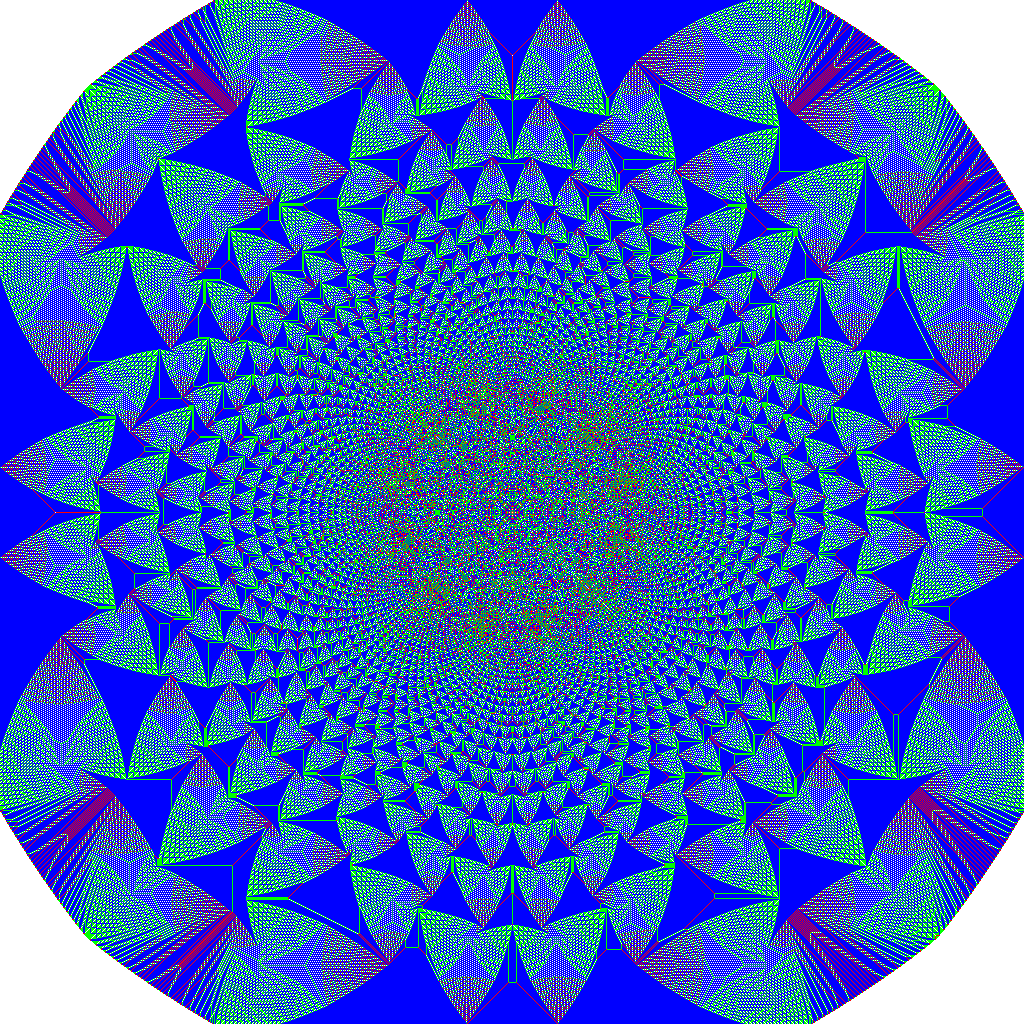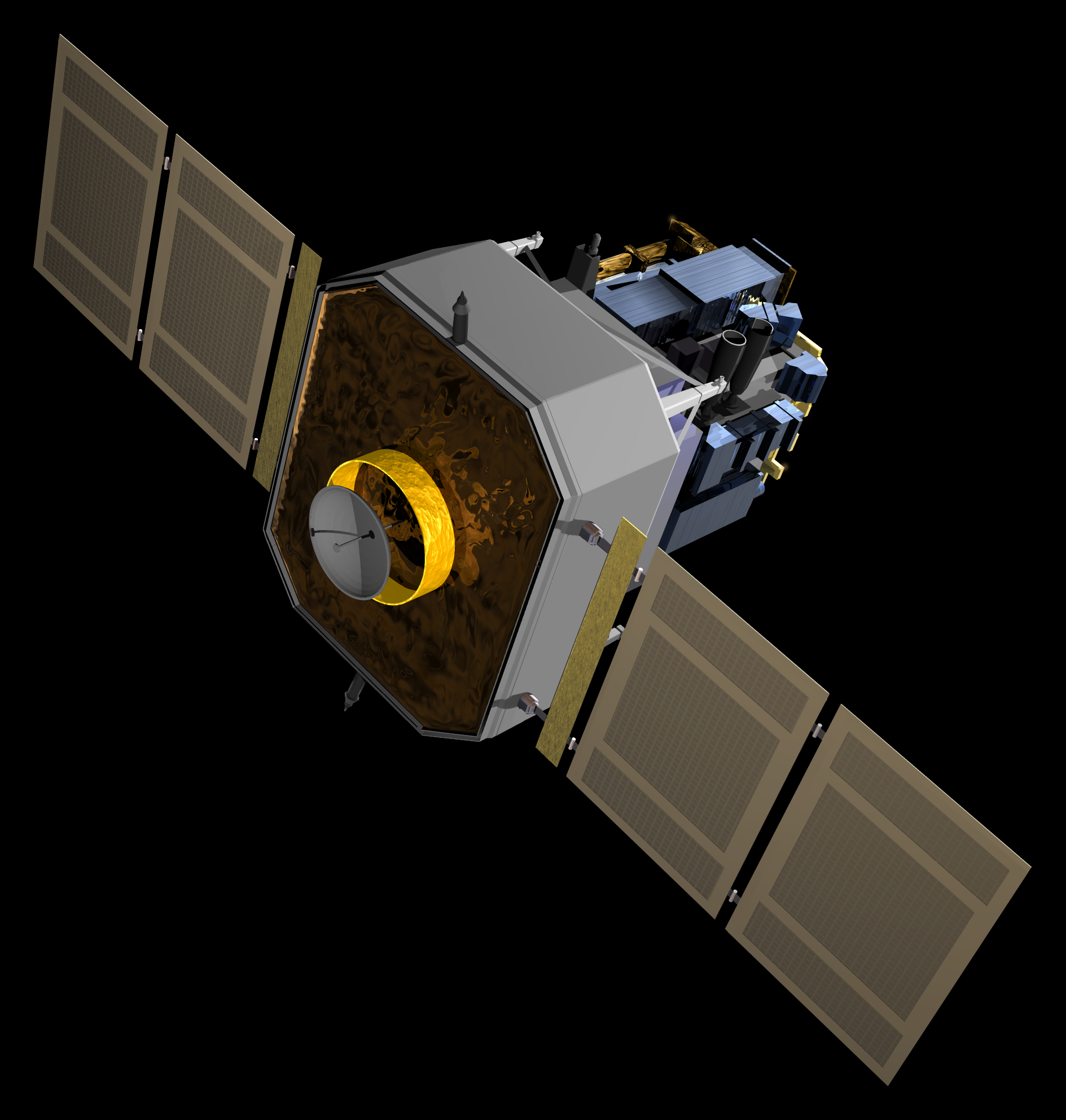|
Self-organized Criticality
Self-organized criticality (SOC) is a property of dynamical systems that have a critical point as an attractor. Their macroscopic behavior thus displays the spatial or temporal scale-invariance characteristic of the critical point of a phase transition, but without the need to tune control parameters to a precise value, because the system, effectively, tunes itself as it evolves towards criticality. The concept was put forward by Per Bak, Chao Tang and Kurt Wiesenfeld ("BTW") in a paper , following an earlier paper by Jonathan Katz published in 1987 in ''Physical Review Letters'', and is considered to be one of the mechanisms by which complexity arises in nature. Its concepts have been applied across fields as diverse as geophysics, physical cosmology, evolutionary biology and ecology, bio-inspired computing and optimization (mathematics), economics, quantum gravity, sociology, solar physics, plasma physics, neurobiology and others. SOC is typically observed in slowl ... [...More Info...] [...Related Items...] OR: [Wikipedia] [Google] [Baidu] |
Optimization (mathematics)
Mathematical optimization (alternatively spelled ''optimisation'') or mathematical programming is the selection of a best element, with regard to some criteria, from some set of available alternatives. It is generally divided into two subfields: discrete optimization and continuous optimization. Optimization problems arise in all quantitative disciplines from computer science and engineering to operations research and economics, and the development of solution methods has been of interest in mathematics for centuries. In the more general approach, an optimization problem consists of maxima and minima, maximizing or minimizing a Function of a real variable, real function by systematically choosing Argument of a function, input values from within an allowed set and computing the Value (mathematics), value of the function. The generalization of optimization theory and techniques to other formulations constitutes a large area of applied mathematics. Optimization problems Opti ... [...More Info...] [...Related Items...] OR: [Wikipedia] [Google] [Baidu] |
John Von Neumann
John von Neumann ( ; ; December 28, 1903 – February 8, 1957) was a Hungarian and American mathematician, physicist, computer scientist and engineer. Von Neumann had perhaps the widest coverage of any mathematician of his time, integrating Basic research, pure and Applied science#Applied research, applied sciences and making major contributions to many fields, including mathematics, physics, economics, computing, and statistics. He was a pioneer in building the mathematical framework of quantum physics, in the development of functional analysis, and in game theory, introducing or codifying concepts including Cellular automaton, cellular automata, the Von Neumann universal constructor, universal constructor and the Computer, digital computer. His analysis of the structure of self-replication preceded the discovery of the structure of DNA. During World War II, von Neumann worked on the Manhattan Project. He developed the mathematical models behind the explosive lense ... [...More Info...] [...Related Items...] OR: [Wikipedia] [Google] [Baidu] |
Stanislaw Ulam
Stanislav and variants may refer to: People *Stanislav (given name), a Slavic given name with many spelling variations (Stanislaus, Stanislas, Stanisław, etc.) Places * Stanislav, Kherson Oblast, a coastal village in Ukraine * Stanislaus County, California * Stanislaus River, California * Stanislaus National Forest, California * Place Stanislas, a square in Nancy, France, World Heritage Site of UNESCO * Saint-Stanislas, Mauricie, Quebec, a Canadian municipality * Stanizlav, a fictional train depot in the game '' TimeSplitters: Future Perfect'' * Stanislau, German name of Ivano-Frankivsk, Ukraine Schools * St. Stanislaus High School, an institution in Bandra, Mumbai, India * St. Stanislaus High School (Detroit) * Collège Stanislas de Paris, an institution in Paris, France * California State University, Stanislaus, a public university in Turlock, CA * St Stanislaus College (Bathurst) St Stanislaus' College is an Australian independent Roman Catholic secondary day and boar ... [...More Info...] [...Related Items...] OR: [Wikipedia] [Google] [Baidu] |
Cellular Automata
A cellular automaton (pl. cellular automata, abbrev. CA) is a discrete model of computation studied in automata theory. Cellular automata are also called cellular spaces, tessellation automata, homogeneous structures, cellular structures, tessellation structures, and iterative arrays. Cellular automata have found application in various areas, including physics, theoretical biology and microstructure modeling. A cellular automaton consists of a regular grid of ''cells'', each in one of a finite number of ''states'', such as ''on'' and ''off'' (in contrast to a coupled map lattice). The grid can be in any finite number of dimensions. For each cell, a set of cells called its ''neighborhood'' is defined relative to the specified cell. An initial state (time ''t'' = 0) is selected by assigning a state for each cell. A new ''generation'' is created (advancing ''t'' by 1), according to some fixed ''rule'' (generally, a mathematical function) that determines the new state of e ... [...More Info...] [...Related Items...] OR: [Wikipedia] [Google] [Baidu] |
Statistical Physics
In physics, statistical mechanics is a mathematical framework that applies statistical methods and probability theory to large assemblies of microscopic entities. Sometimes called statistical physics or statistical thermodynamics, its applications include many problems in a wide variety of fields such as biology, neuroscience, computer science, information theory and sociology. Its main purpose is to clarify the properties of matter in aggregate, in terms of physical laws governing atomic motion. Statistical mechanics arose out of the development of classical thermodynamics, a field for which it was successful in explaining macroscopic physical properties—such as temperature, pressure, and heat capacity—in terms of microscopic parameters that fluctuate about average values and are characterized by probability distributions. While classical thermodynamics is primarily concerned with thermodynamic equilibrium, statistical mechanics has been applied in non-equilibrium stat ... [...More Info...] [...Related Items...] OR: [Wikipedia] [Google] [Baidu] |
Nonlinearity
In mathematics and science, a nonlinear system (or a non-linear system) is a system in which the change of the output is not proportional to the change of the input. Nonlinear problems are of interest to engineers, biologists, physicists, mathematicians, and many other scientists since most systems are inherently nonlinear in nature. Nonlinear dynamical systems, describing changes in variables over time, may appear chaotic, unpredictable, or counterintuitive, contrasting with much simpler linear systems. Typically, the behavior of a nonlinear system is described in mathematics by a nonlinear system of equations, which is a set of simultaneous equations in which the unknowns (or the unknown functions in the case of differential equations) appear as variables of a polynomial of degree higher than one or in the argument of a function which is not a polynomial of degree one. In other words, in a nonlinear system of equations, the equation(s) to be solved cannot be written as a li ... [...More Info...] [...Related Items...] OR: [Wikipedia] [Google] [Baidu] |
Degrees Of Freedom (physics And Chemistry)
In physics and chemistry, a degree of freedom is an independent physical parameter in the chosen parameterization of a physical system. More formally, given a parameterization of a physical system, the number of degrees of freedom is the smallest number n of parameters whose values need to be known in order to always be possible to determine the values of ''all'' parameters in the chosen parameterization. In this case, any set of n such parameters are called degrees of freedom. The location of a particle in three-dimensional space requires three Coordinate system, position coordinates. Similarly, the direction and speed at which a particle moves can be described in terms of three velocity components, each in reference to the three dimensions of space. So, if the time evolution of the system is Deterministic system, deterministic (where the state at one instant uniquely determines its past and future position and velocity as a function of time), such a system has six degrees of f ... [...More Info...] [...Related Items...] OR: [Wikipedia] [Google] [Baidu] |
Non-equilibrium Thermodynamics
Non-equilibrium thermodynamics is a branch of thermodynamics that deals with physical systems that are not in thermodynamic equilibrium but can be described in terms of macroscopic quantities (non-equilibrium state variables) that represent an extrapolation of the variables used to specify the system in thermodynamic equilibrium. Non-equilibrium thermodynamics is concerned with transport processes and with the rates of chemical reactions. Almost all systems found in nature are not in thermodynamic equilibrium, for they are changing or can be triggered to change over time, and are continuously and discontinuously subject to flux of matter and energy to and from other systems and to chemical reactions. Many systems and processes can, however, be considered to be in equilibrium locally, thus allowing description by currently known equilibrium thermodynamics. Nevertheless, some natural systems and processes remain beyond the scope of equilibrium thermodynamic methods due to the exis ... [...More Info...] [...Related Items...] OR: [Wikipedia] [Google] [Baidu] |
Neurobiology
Neuroscience is the scientific study of the nervous system (the brain, spinal cord, and peripheral nervous system), its functions, and its disorders. It is a multidisciplinary science that combines physiology, anatomy, molecular biology, developmental biology, cytology, psychology, physics, computer science, chemistry, medicine, statistics, and Mathematical Modeling, mathematical modeling to understand the fundamental and emergent properties of neurons, glia and neural circuits. The understanding of the biological basis of learning, memory, behavior, perception, and consciousness has been described by Eric Kandel as the "epic challenge" of the Biology, biological sciences. The scope of neuroscience has broadened over time to include different approaches used to study the nervous system at different scales. The techniques used by neuroscientists have expanded enormously, from molecular and cell biology, cellular studies of individual neurons to neuroimaging, imaging of Sen ... [...More Info...] [...Related Items...] OR: [Wikipedia] [Google] [Baidu] |
Plasma Physics
Plasma () is a state of matter characterized by the presence of a significant portion of charged particles in any combination of ions or electrons. It is the most abundant form of ordinary matter in the universe, mostly in stars (including the Sun), but also dominating the rarefied intracluster medium and intergalactic medium. Plasma can be artificially generated, for example, by heating a neutral gas or subjecting it to a strong electromagnetic field. The presence of charged particles makes plasma electrically conductive, with the dynamics of individual particles and macroscopic plasma motion governed by collective electromagnetic fields and very sensitive to externally applied fields. The response of plasma to electromagnetic fields is used in many modern devices and technologies, such as plasma televisions or plasma etching. Depending on temperature and density, a certain number of neutral particles may also be present, in which case plasma is called partially ioni ... [...More Info...] [...Related Items...] OR: [Wikipedia] [Google] [Baidu] |
Solar Physics
Solar physics is the branch of astrophysics that specializes in the study of the Sun. It intersects with many disciplines of pure physics and astrophysics. Because the Sun is uniquely situated for close-range observing (other stars cannot be resolved with anything like the spatial or temporal resolution that the Sun can), there is a split between the related discipline of observational astrophysics (of distant stars) and observational solar physics. The study of solar physics is also important as it provides a "physical laboratory" for the study of plasma physics. History Ancient times Babylonians were keeping a record of solar eclipses, with the oldest record originating from the ancient city of Ugarit, in modern-day Syria. This record dates to about 1300 BC. Ancient Chinese astronomers were also observing solar phenomena (such as solar eclipses and visible sunspots) with the purpose of keeping track of calendars, which were based on lunar and solar cycles. Unfortunately, rec ... [...More Info...] [...Related Items...] OR: [Wikipedia] [Google] [Baidu] |







